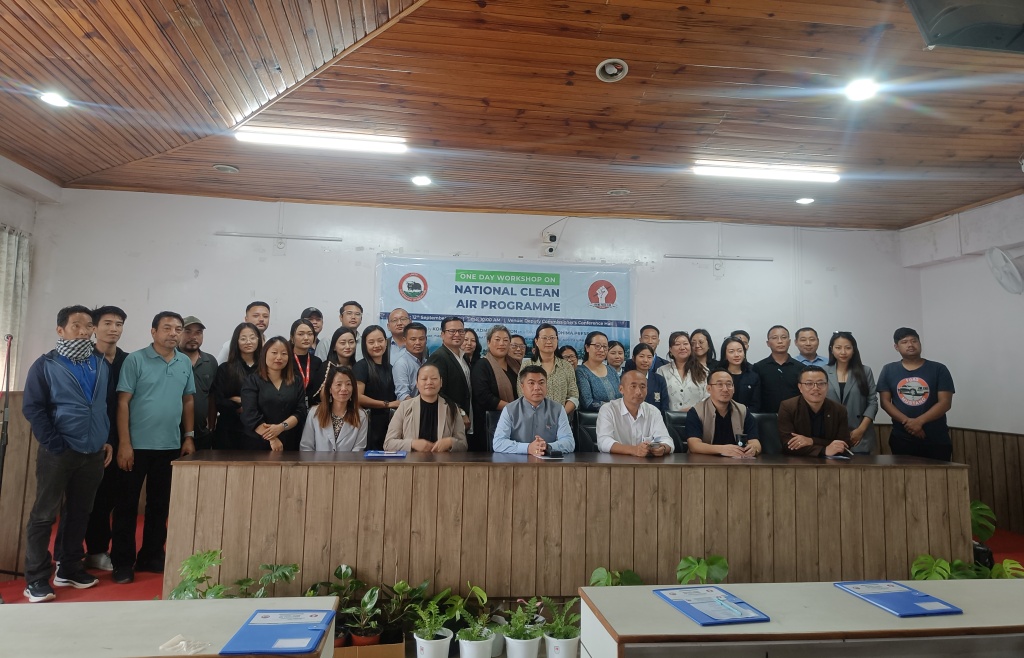Kohima and Dimapur flagged as non-attainment cities by CPCB, with air quality levels exceeding permissible pollution limits.
Share

KOHIMA — Kohima continues to grapple with air pollution, with monitoring stations showing levels above permissible limits. Both Kohima and Dimapur are among the 131 cities in India categorised as “non-attainment cities” with respect to particulate matter by the Central Pollution Control Board (CPCB).
This was highlighted by Yanathung Kithan, Scientist-B at the Nagaland Pollution Control Board, during a one-day workshop on the National Clean Air Programme (NCAP) organised by the Kohima district administration in collaboration with the Kohima Press Club (KPC). The programme was part of the year-long celebration of KPC’s 25th anniversary and was held at the Deputy Commissioner’s conference hall on Friday.
In his presentation on air pollution with reference to Kohima, Kithan explained that the National Air Monitoring Programme currently has 1,340 monitoring stations across 28 states and seven Union Territories, covering both manual and Continuous Ambient Air Quality Monitoring Systems (CAAQMS).
Also read: Stop hiding behind technicalities, RMSA-2016 teachers tell Nagaland government
Nagaland has 39 manual and one CAAQMS stations across 11 districts.
In Kohima, the monitoring stations are located opposite the NST office (residential), PWD junction (commercial), High School junction (commercial), Upper Midland (residential), and Forest Colony (residential/background). He noted that the Forest Colony station is for a specific two-year study.
Kithan clarified that as per CPCB guidelines, three categories of locations — residential, commercial, and industrial — are required, but since Nagaland lacks a designated industrial zone, the machines have been set up in residential and commercial areas.
He reported that all monitoring stations in Kohima show levels above permissible limits, except at Upper Midland. The data also indicates that air quality worsens in the evening, between 2 pm and 10 pm, when most residents burn waste.
According to the CPCB, Kohima and Dimapur were classified as non-attainment cities based on monitoring data from 2011 to 2015, which showed an increasing trend of air pollution.
Sources of air pollution in Kohima, Kithan said, include stone crushers, construction and demolition waste, sand stockpiling, firecracker bursting, firewood burning for cooking, dust from poor roads, waste burning, and vehicular emissions, among others.
Deputy Commissioner of Kohima, Henok Buchem, speaking at the programme, stressed that air pollution is one of the greatest environmental challenges facing the city. He said that while Kohima’s green fields, forests, and biodiversity act as natural allies against pollution, rapid and unplanned urbanisation threatens to disturb its ecology. Urban growth, he added, should be carefully managed to protect these natural assets.
“The air we breathe is not merely the backdrop of our lives—it is the lifeblood of our health, our children’s future, and the vibrancy of our economy and culture,” he said.
Buchem also underlined the role of the media in creating awareness and encouraging behavioural change. He observed that journalism has increasingly tilted towards sensationalism, warned against “yellow journalism and tabloid journalism”, and urged practitioners to return to the basics of “accuracy, brevity, and clarity.”
“You are not just observers but catalysts. Your reporting shapes public perception, pressures accountability, and nurtures a culture of responsibility,” he told the media. He further called on journalists to provide clear reporting on air quality indices, health advisories, and the impact of related policies, while also highlighting success stories and innovations from the community.
Buchem urged the press to use accessible language, visuals, and infographics to reach all sections of society and to provoke public discussion on important matters such as the need for public transportation.